Muscle Insider
New member
Running is one of the most popular forms of aerobic exercise. It takes center stage in training montages and major motion pictures — but despite being the backdrop to some very motivational content, running isn’t for everyone. It’s hard to argue against the benefits of running, but it might not be the best option for you or your...
The post Best Cardio Alternatives to Running, From a Personal Trainer appeared first on BarBend.
Running is one of the most popular forms of aerobic exercise. It takes center stage in training montages and major motion pictures — but despite being the backdrop to some very motivational content, running isn’t for everyone. It’s hard to argue against the benefits of running, but it might not be the best option for you or your program. Especially if you hate it.
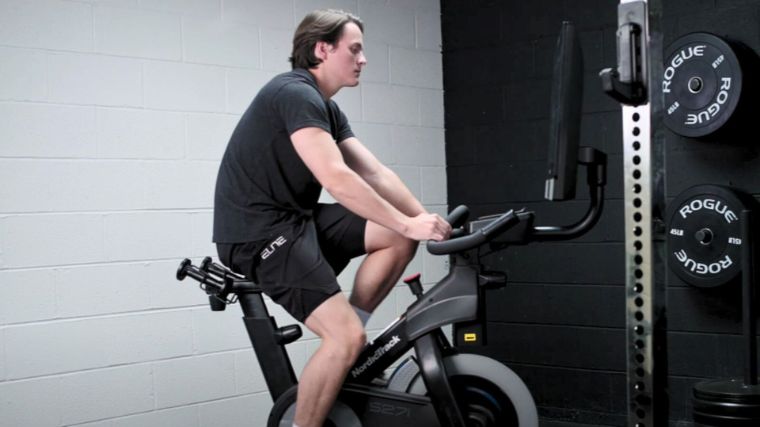
The main goal of any cardio session is to crank your heart rate, improve your cardiovascular fitness, or maybe even prepare for competition. Unless you’re training for a running event, however, you don’t actually need to run to accomplish any of these tasks. Get your heart pumping with these eight best cardio alternatives to running.
Best Cardio Alternatives to Running
Elliptical
The elliptical machine provides a low-impact alternative to running. It mimics a great deal of the movement patterns you use in running without the repeated ground strikes. Since it has a built-in resistance dial, you can also customize an elliptical workout to your current needs and fitness level.
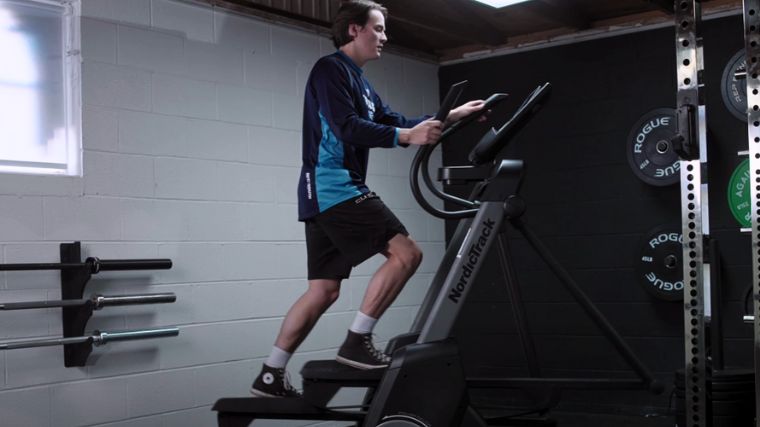
Why Do It: The elliptical exercises your entire body by involving most major muscle groups. Your arms, legs, and back are recruited during this low-impact movement, all the while contributing to your warm-up, cool-down, or cardiovascular endurance goals.
Equipment Needed: The only equipment you’ll need is the elliptical machine itself. Like all forms of cardio, it’s a good idea to bring a water bottle, appropriately breathable clothing, and a good pair of shoes.
How to Do It Step-by-Step: The elliptical weaves seamlessly into many different programs. Here’s how to use the machine.
[*]Step onto the elliptical with your body weight placed evenly on each foot pedal.*
[*]Grab each handlebar and maintain an upright posture.**
[*]Begin pedaling with your legs and alternating a pull and push with each arm respectively. As one leg pedals, the opposite arm should be pushing its handlebar forward.
* For athletes that can’t actively engage both legs, you might opt for an arm ergometer or arm bike, or use a ski erg from a seated position. If possible for you, you can also simply stand steady on the elliptical and do the vast majority of work with your arms.
** If you’re an athlete who can’t actively engage both arms, you can simply do most or even all of the work with your legs. An exercise bike might also be useful here.
Make It Easier: Scale the resistance down to make your elliptical workout easier.
Make It Harder: Scale the resistance up, or increase the overall pace of your workout to make the elliptical session more difficult.
Coach’s Tip: Try using the elliptical as a full-body warm-up for your next leg day.
Stair Climber
Stair climbing is a favored form of cardio for many reasons. Aside from an absurdly effective workout, it’s extremely straightforward to use and easy to recover from.
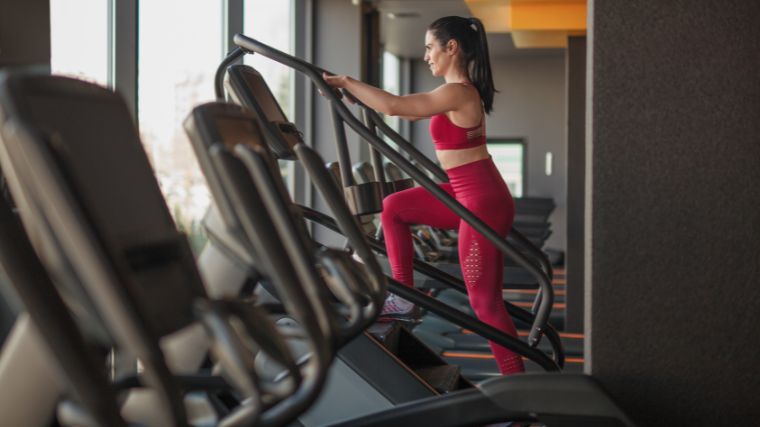 Credit: Max kegfire / Shutterstock
Credit: Max kegfire / Shutterstock
Why Do It: The stair climber forces you to lift your body weight with each stride, incorporating proper stepping mechanics into your cardio workout in a similar way that a split squat or lunge does. With the right pace, the stair climber is one of your best options for elevating your heart rate and pursuing all the health benefits that come with it. It primarily targets your quads and glutes, which also has a great carryover for anyone trying to build some initial endurance in those areas.
Equipment Needed: Much like the other cardiovascular options available to you, the stair climber only needs one piece of equipment — the machine itself. With that in mind, you have a few options. The air pressure-style pneumatic stair climber or the mechanical version are both popular choices in many gyms.
How to Do It Step-by-Step: While you may have seen many extracurriculars being performed on the stair climber, here are the essentials for your next workout.
[*]Take your place toward the top position on the stair climber and hold onto the handrails.
[*]Select your workout or difficulty setting.
[*]Assume a slightly hinged posture, holding onto the handrails for stability or taking them off for an increased challenge.
[*]Begin by matching the pace of the machine, completing each step by landing on the platform and driving evenly through your whole foot.
Make It Easier: Take a slower pace than you think at first. The stair climber is a deceptively challenging machine. If you need something a little lower impact, an elliptical set to a steep incline-simulating setting can help.
Make It Harder: Increase the pace of the stair climber workout or periodically take a step two stairs at a time (while maintaining a modest pace).
Coach’s Tip: While popular, performing a kickback motion is unnecessary on the stair climber. Any added benefits pale in comparison to focusing on your pace and regular climbing technique.
Rowing Machine
The rowing machine is another staple found in almost every gym. It is a lightweight, mobile alternative to running or treadmills that provides all the needed challenges for an excellent cardiovascular workout.
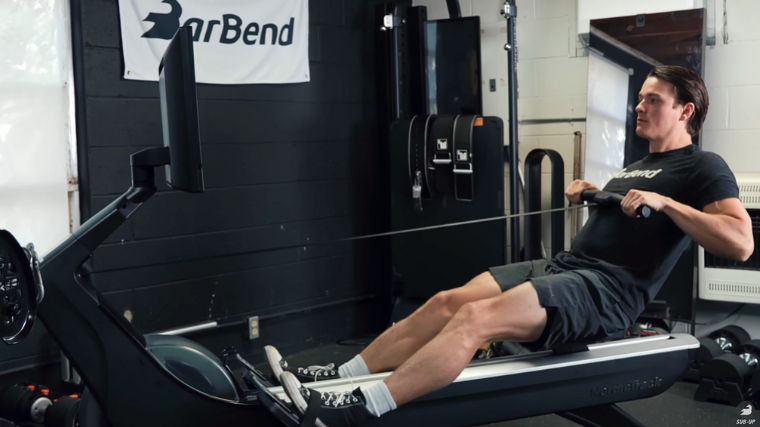
[Read More: Is Running or Rowing Better for Strength Athletes?]
Why Do It: Unlike the treadmill, the rowing machine incorporates the lower body with a significant contribution from your upper body. It is a fun way to challenge yourself to learn a new technique and provides a great alternative to running for your cardiovascular benefits.
Equipment Needed: The rowing machine is a standalone piece of equipment. Aside from the standard suggestions of water and appropriate footwear, you won’t need much as long as your rower has a functioning screen. If it doesn’t, a stopwatch or timer is a good option should high-intensity interval training (HIIT) be on the menu.
How to Do It Step-by-Step: To get the most out of your rowing workouts, there is a solid technique framework to follow. Unlike some other alternatives to running, rowing may take some practice.
[*]Sit down on the rower’s seat, securing each foot in place on the appropriate foot pad.
[*]Bend your knees and slide towards the front of the machine. This is your starting position.
[*]Initiate each repetition by driving with your legs, keeping your core tight and your arms long.
[*]As your legs extend, begin to draw your arms towards your torso completing the rowing portion of the motion.
Make It Easier: Dial down the intensity by lowering the fan resistance or by slowing your pace. Alternatively, keep your arms locked out and remove that portion of each motion, making it just the leg drive.
Make It Harder: Increase your pace or bump up the resistance on the fan.
Coach’s Tip: Brushing up on your rowing technique has a huge return on investment for your performance. Treat your rowing machine workouts like skills training and constantly strive to fine-tune your approach.
Stationary Bike
The stationary bike is another nearly universal piece of gym equipment. From home gyms to big boxes and boutique indoor cycling studios – you should have no trouble finding this running alternative.
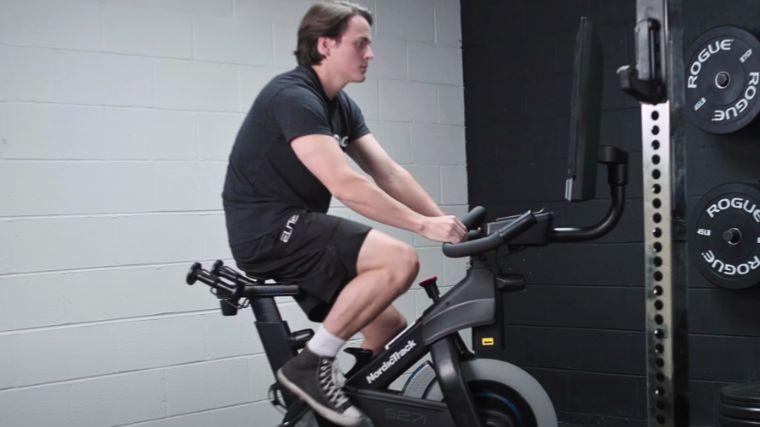
Why Do It: The stationary bike stands out as one of the lowest barriers to entry pieces of equipment. From your first day working out to some of the most grueling training sessions, the stationary bike scales to meet your needs. While predominantly a lower body exercise, stationary bikes also offer scaling resistance and a wide range of workout styles to suit your preferences.
Equipment Needed: Although not mandatory, some stationary bikes benefit from cycling shoes. Depending on your intensity or venue, you may also enjoy using a pair of cycling gloves for particularly intense spin classes.
How to Do It Step-by-Step: While the stationary bike is fairly plug-and-play, here’s how to manage some of the finer details.
[*]Set your seat height to about the middle of your hip when you’re standing next to the machine.
[*]If the handlebars adjust, move them to an appropriate distance that allows a slight bend in your arms while cycling.
[*]Take a seat and assume a neutral spine posture with both hands on the handlebars.
[*]Place your feet on the pedals and begin driving through the ball of your foot and using your hamstrings to drag the opposite leg backward.
Make It Easier: Lower the resistance on the machine or slow your pace.
Make It Harder: Increase your resistance and stand up on the machine as you stride or increase your pace. Alternatively, try dropping in on a spin class to really make your stationary bike workout harder.
Coach’s Tip: Try working on your stationary bike technique during a warm-up or cool-down. It is easier to be mindful of your positioning and movements with lower intensity.
Incline Walking
Incline walking is an often overlooked tool in your cardiovascular training toolbox. While less flashy than running, incline walking is an excellent low-impact (but not necessarily low-intensity) method of sneaking work to your cardiovascular system, and minimizing your need to recover between workouts.
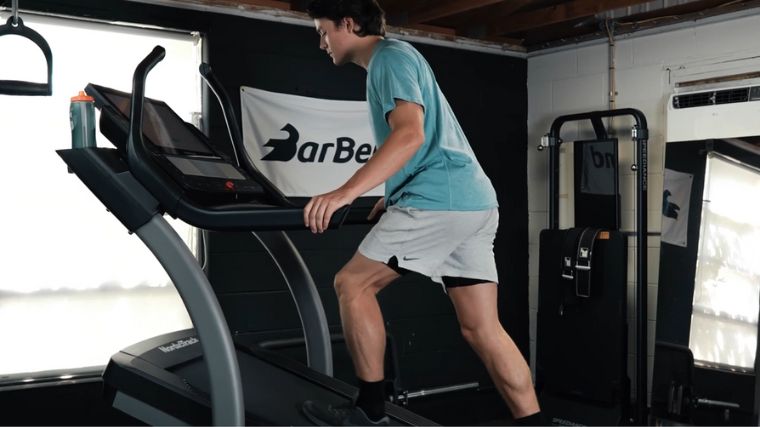
[Read More: The Best Treadmills for Walking, Researched and Tested by Our Team]
Why Do It: Incline walking is one of the more straightforward cardiovascular exercises. However, it is another deceptively challenging alternative as you are being tested by both the pace and the degree of incline. Although one of the more low-impact forms of aerobic exercise, you are still able to get similar health benefits (for example, improved resting heart rate and blood pressure) when compared to other choices.
Equipment Needed: All you’ll need is a treadmill with an incline, your walking shoes, water, and a good playlist.
How to Do It Step-by-Step: While you’re certainly able to make a full-scale challenge out of your incline walking (for example, the 12-3-30 workout), it really is one of the simpler training sessions to design.
[*]Step onto your treadmill and hold onto the handrails.
[*]Set your pace to 2.0 to 4.0 miles per hour.
[*]Set your incline to 3.0 to 15.0 grade.
[*]Use the handrails for stability or take your hands off for an added challenge.
Make It Easier: Reduce the incline, pace, or total time of your incline walking workout.
Make It Harder: Increase the incline, pace, or total time of your incline walking workout.
Coach’s Tip: Begin your incline walking workouts at a moderate pace and incline — the challenge of both factors will sneak up on you.
High-Intensity Interval Training Circuits
High-intensity interval training (HIIT) takes many forms. From sprints on any number of cardio machines to full-on circuit training, as long as you are partitioning your work-to-rest ratios you’ll be performing a HIIT workout.
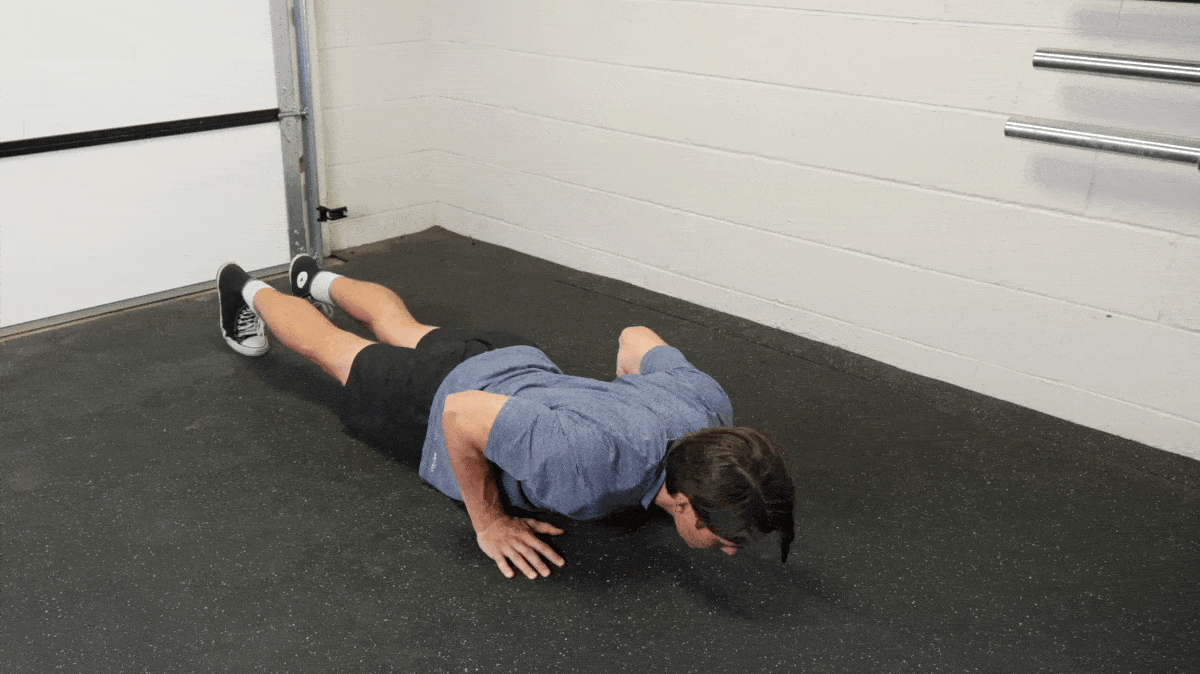
Why Do It: HIIT circuits are some of the most diverse and mentally engaging forms of cardio at your disposal. All HIIT workouts involve a short burst of work followed by short rest periods. As long as you’re incorporating that basic formula, your available equipment, and creativity are the only limitations here.
Equipment Needed: HIIT circuits benefit from equipment such as barbells, dumbbells, kettlebells, medicine balls, sleds, or even battle ropes. Other potential equipment options include cardio machines to incorporate sprints or for active recovery periods.
Some low- or no-equipment options include:
How to Do It Step-by-Step: HIIT workouts, particularly circuits are defined by a period of intense work followed by (short) active rest. Here’s an example of how to do it.
[*]Set up four to five exercises in a row, be mindful that you can easily flow from one to the next with minimal downtime.
[*]Perform one set of each exercise before moving on to the next.
[*]Once all exercises have been completed, perform 30 seconds to one minute of active recovery.
[*]Try to complete as many rounds of the circuit within 30 minutes.
Make It Easier: Reduce the repetitions per set or the number of exercises in your circuit.
Make It Harder: Reduce the rest times between rounds or increase the resistance on your circuit exercises.
Coach’s Tip: Keep your technique clean and don’t rush your repetitions. Movement quality benefits you as much as simply completing as many rounds as possible.
Group Fitness
Group fitness classes are perhaps some of the most underutilized forms of cardio available to you. While CrossFit might not be up your alley, yoga, Zumba, or a high-intensity spin session might be a bit more attractive (or vice versa). The community vibe, energetic music, and completely distinct workout from what you’re used to in the weight room provide huge benefits.
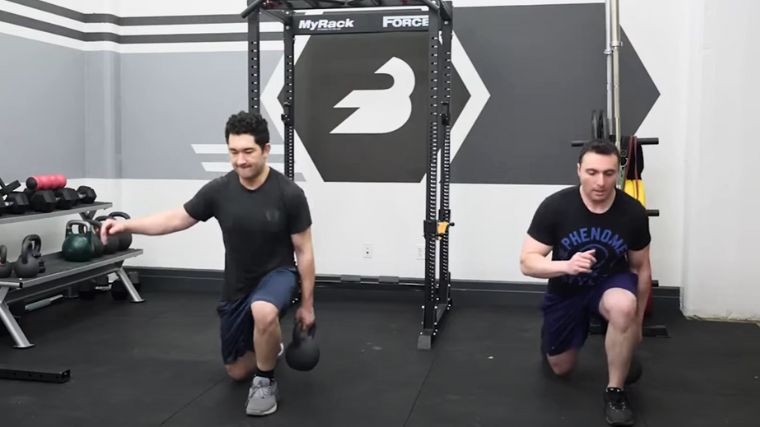
[Read More: Research Suggests Working Out In Groups Improves Quality of Life]
Why Do It: Group fitness takes your mind out of the monotony of what cardio workouts sometimes become. Aerobic exercise is rhythmic in nature, and so too are their workouts. If you’re starting to feel stale — or lonely — in your standard-issue cardiovascular sessions, group fitness classes are a massive departure that can breathe new life into your enthusiasm.
Equipment Needed: Although many classes require specific equipment, they are also typically provided on-site. (If you’re opting for yoga, you may have to bring your own exercise mat.) Just bring yourself, comfortable training clothes, and water.
How to Do It Step-by-Step: Although I can’t give you a complete walkthrough of a group fitness class, as they’re all unique to their instructor and participants, here are some helpful tips to have the best experience.
[*]Find out ahead of time if the instructor is experienced with accommodating any needs you might have, such as providing a trauma-informed experience or offering postpartum support for athletes who have recently given birth.
[*]Approach the instructor at the start of the class with any questions or to get comfortable with the format. Let them know of any past or current injuries or other considerations you may have.
[*]Arrive early to set up and find a spot in the room.
[*]Go at your own pace — classes are often choreographed and take time to learn.
[*]Go more than once. Until you find your groove, it may be hard to know which class suits you the best.
Make It Easier: Each class typically provides alternative exercises or options for scaling. Make sure you inquire ahead of time to make sure you’re getting your needs met by your instructor, equipment, and environment.
Make It Harder: Scaled intensifiers are also typically provided, or in the case of a spin class, for example, increase the resistance on your machine.
Coach’s Tip: Let yourself have fun and don’t worry about being the most skilled in the room. Everyone gets winded in these classes — that’s the point. Meet yourself where you’re at and enjoy the ride.
Nature Walks
Taking your cardio workouts outside is one of your best alternatives to road or treadmill running. Finding a few local trails through nature in your area is a great way to add a relaxing backdrop to your cardiovascular training. With the majority of routines taking place inside, nature walks are an opportunity to enjoy the fresh air.
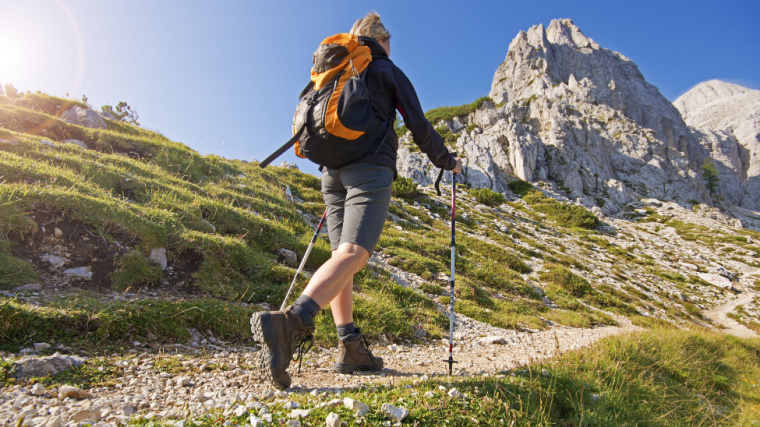 Credit: DUSAN ZIDAR / Shutterstock
Credit: DUSAN ZIDAR / Shutterstock
[Read More: Science-Backed Benefits of Walking for Strength Athletes]
Why Do It: Nature walks allow you to disconnect from the highly stimulating environment of the gym. You’re able to go it alone and relax or bring a friend to enjoy the experience with. In any case, nature walks are low-impact alternatives to running. They can also scale all the way to quite challenging hikes.
Equipment Needed: Grab a pair of hiking shoes, water, and appropriate clothes. Be mindful of insects and weather to get the most out of your walks.
How to Do It Step-by-Step: There isn’t much instruction needed for your nature walks, but there are a few helpful tips.
[*]Map several routes. Know what’s safe in your area and consider letting a friend have your location on their phone. Finding a handful of paths keeps the scenery from becoming too familiar and losing its luster.
[*]Listen to a podcast, walk with a friend, or go it alone and indulge in the sounds of nature.
[*]Don’t be too structured. Instead of hard guidelines such as those in a HIIT workout, allow yourself to simply enjoy the experience with health being the byproduct.
Make It Easier: Having a number of options is an asset here. Try locating easier or more challenging routes.
Make It Harder: Try increasing the length of your nature walk or using a more difficult path if one is available. You can also wear a weighted vest.
Coach’s Tip: Remember the seasonal aspects of nature walks. Just because it gets cold doesn’t mean you need to stop — just be prepared.
Running Vs. Alternative Cardio Exercises
Running is one of the most recognizable forms of aerobic exercise, often popping up as the go-to choice in many programs. However, comparing the movement patterns, level of convenience, technique, recovery impact, and overall enjoyment of running or its alternatives helps you refine your choice.
Movement Patterns
Each alternative provides the opportunity to mimic or completely move away from similar movement patterns as running. For example, the elliptical is an extremely similar movement pattern to walking, but more rhythmic in nature. The machine avoids the high-impact nature of each foot strike during running. On the other hand, stationary bikes or rowing machines offer distinct movement patterns for your physical activity.
Convenience
The convenience of running is pretty hard to beat. Whether inside on a treadmill or grabbing a pair of shoes and heading out the door, it’s one of the easiest ways to get moving. However, running isn’t the only convenient method for training your cardio.
Most alternatives will be readily available at your gym. If you’re not into weight training or don’t have gym access, nature walks, stair climbing at home, or high-intensity interval circuits (using bodyweight exercises) are all available with minimal issues.
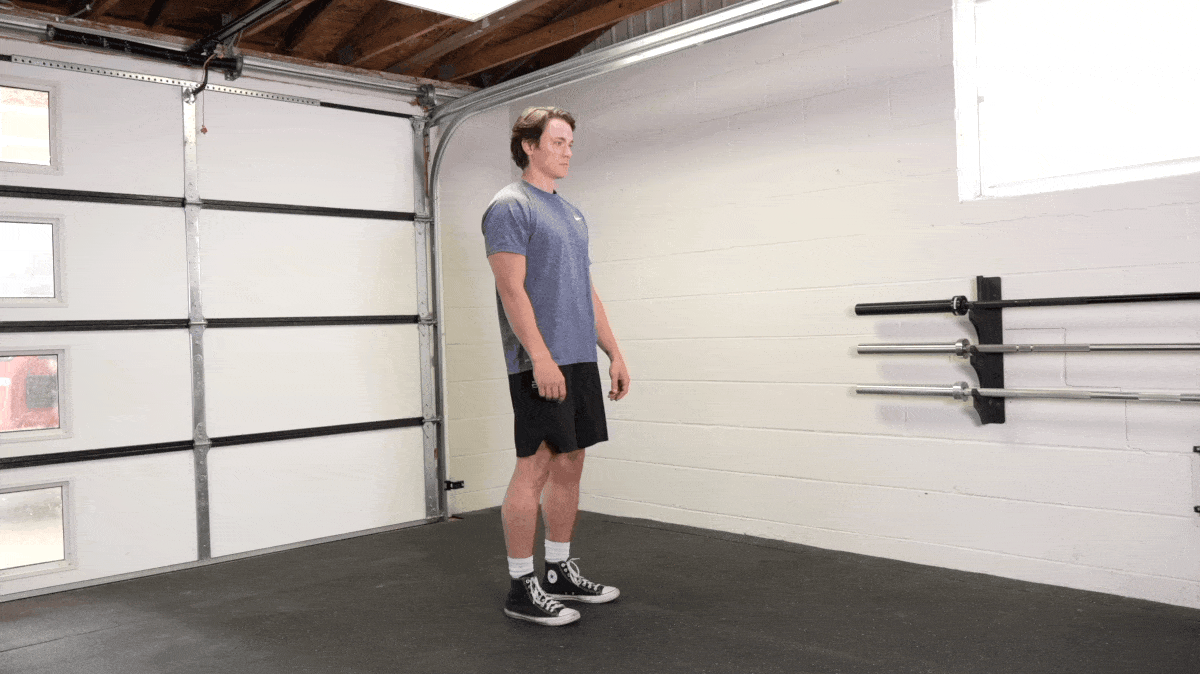
[Read More: At-Home Workouts for Strength, Muscle Growth, Power, and More]
To that point, stationary bike workouts may also be modified to become a tool for your commute. Investing in a road bike or finding a boutique cycling studio are also convenient methods of weaving in alternatives to running.
Technique
Each different cardio exercise has different technical requirements and form needs. Running is a much more technical exercise than some realize, and the same is true of the rowing machine or group fitness classes. Although each provides enormous benefits, some alternatives simply are more complex to learn than others.
[Read More: Running on a Treadmill Vs. Running Outside]
The stationary bike, stair climber, nature walks, or elliptical are often much easier to get used to. Whether you’re looking to get your workout done and dusted and move on, or are into investing time for skill development, running and several of its alternatives provide you with these opportunities.
Recovery
Recovery is a big factor in choosing your cardiovascular training tools. Whether aerobic exercise is your main goal or meant to complement your weight lifting, there are no free workouts. Everything contributes to your overall soreness or fatigue throughout the week.
Running is particularly notorious for producing soreness or even threatening shin splints early in your technical development. Because of the repeated impacts with the ground and the amount of time the average run takes to complete, this soreness is rather hard to avoid (at least initially). Group fitness or spin classes may produce similar levels of soreness or fatigue because of how novel or intense they also are.
https://www.youtube.com/watch?v=PaIg4k0IG0kVideo can’t be loaded because JavaScript is disabled: The Ultimate Recovery Tool? — How to PROPERLY Use a Massage Gun (2024) (https://www.youtube.com/watch?v=PaIg4k0IG0k)
Lower-impact options like the elliptical, stationary bike, or even stair climbing offer big opportunities for cardiovascular health and performance with less cost to your recovery. This may make them particularly good activities for an active recovery day.
Enjoyment
Enjoyment might be the number one deciding factor in your choice to run or employ any of its alternatives. Enjoyment helps with the consistency and repeatability of a training program. Few other characteristics influence the success of your programming more than personal enjoyment. Why? If you like something, you’re more likely to keep doing it.
[Read More: Check Out These 5 Expert Tips for Running on the Beach Safely (& Benefits)]
This comparison is a purely individual decision. For all the pros or cons of running or its alternatives, only you decide which is best. Your best bet is to test several (or all) of the options to find what works best for you.
To Run or Not to Run?
Running is a great way to improve your cardiovascular health and performance. Running is one of the first forms of aerobic training that pops into mind, although it certainly isn’t the only one. There are a wide variety of machines, classes, or even outdoor activities that are great alternatives to running. Whichever synergizes best with your workout program and preferences will likely be the one that’s right for you.
FAQs
Running is usually the first cardiovascular exercise that comes to your mind when designing a program. Here are some frequently asked questions about running or its alternatives.
What cardio can I do to replace running?[/b] Many suitable replacements for running are available to you. The elliptical trainer, stair climber, rowing machine, stationary bike, incline walking, high-intensity interval training circuits, group fitness, or even nature walks are solid choices.
What cardio is just as good as running?[/b] The major benefits of running (aside from training for a running competition) are the aspects of health it helps to improve. For example, running has a positive impact on your resting heart rate, blood pressure, daily calorie balance, or other common fitness goals associated with cardio workouts. It may even help boost your mental health.
However, these benefits are more linked to performing cardiovascular training itself rather than exclusively running. This means that any number of cardio workouts help provide similar benefits.
What is the best cardio exercise without running?[/b] The best cardio exercise without running is the one that you will perform with the most consistency and strive to work hard at. In other words — the option you should choose is generally the option you like best.
This might be stair climbing, nature walks, or even group fitness. Running and all of its alternatives provide huge health and performance benefits. If you’re looking for the best one that doesn’t involve running, test out as many options as possible to find what makes you happiest.
Editor’s Note: The content on BarBend is meant to be informative in nature, but it should not be taken as medical advice. When starting a new training regimen and/or diet, it is always a good idea to consult with a trusted medical professional. We are not a medical resource. The opinions and articles on this site are not intended for use as diagnosis, prevention, and/or treatment of health problems. They are not substitutes for consulting a qualified medical professional.
The post Best Cardio Alternatives to Running, From a Personal Trainer appeared first on BarBend.
Click here to view the article.
The post Best Cardio Alternatives to Running, From a Personal Trainer appeared first on BarBend.
Running is one of the most popular forms of aerobic exercise. It takes center stage in training montages and major motion pictures — but despite being the backdrop to some very motivational content, running isn’t for everyone. It’s hard to argue against the benefits of running, but it might not be the best option for you or your program. Especially if you hate it.

The main goal of any cardio session is to crank your heart rate, improve your cardiovascular fitness, or maybe even prepare for competition. Unless you’re training for a running event, however, you don’t actually need to run to accomplish any of these tasks. Get your heart pumping with these eight best cardio alternatives to running.
Best Cardio Alternatives to Running
- Elliptical
- Stair Climber
- Rowing Machine
- Stationary Bike
- Incline Walking
- High-Intensity Interval Training Circuits
- Group Fitness
- Nature Walks
Elliptical
The elliptical machine provides a low-impact alternative to running. It mimics a great deal of the movement patterns you use in running without the repeated ground strikes. Since it has a built-in resistance dial, you can also customize an elliptical workout to your current needs and fitness level.

Why Do It: The elliptical exercises your entire body by involving most major muscle groups. Your arms, legs, and back are recruited during this low-impact movement, all the while contributing to your warm-up, cool-down, or cardiovascular endurance goals.
Equipment Needed: The only equipment you’ll need is the elliptical machine itself. Like all forms of cardio, it’s a good idea to bring a water bottle, appropriately breathable clothing, and a good pair of shoes.
How to Do It Step-by-Step: The elliptical weaves seamlessly into many different programs. Here’s how to use the machine.
[*]Step onto the elliptical with your body weight placed evenly on each foot pedal.*
[*]Grab each handlebar and maintain an upright posture.**
[*]Begin pedaling with your legs and alternating a pull and push with each arm respectively. As one leg pedals, the opposite arm should be pushing its handlebar forward.
* For athletes that can’t actively engage both legs, you might opt for an arm ergometer or arm bike, or use a ski erg from a seated position. If possible for you, you can also simply stand steady on the elliptical and do the vast majority of work with your arms.
** If you’re an athlete who can’t actively engage both arms, you can simply do most or even all of the work with your legs. An exercise bike might also be useful here.
Make It Easier: Scale the resistance down to make your elliptical workout easier.
Make It Harder: Scale the resistance up, or increase the overall pace of your workout to make the elliptical session more difficult.
Coach’s Tip: Try using the elliptical as a full-body warm-up for your next leg day.
Stair Climber
Stair climbing is a favored form of cardio for many reasons. Aside from an absurdly effective workout, it’s extremely straightforward to use and easy to recover from.

Why Do It: The stair climber forces you to lift your body weight with each stride, incorporating proper stepping mechanics into your cardio workout in a similar way that a split squat or lunge does. With the right pace, the stair climber is one of your best options for elevating your heart rate and pursuing all the health benefits that come with it. It primarily targets your quads and glutes, which also has a great carryover for anyone trying to build some initial endurance in those areas.
Equipment Needed: Much like the other cardiovascular options available to you, the stair climber only needs one piece of equipment — the machine itself. With that in mind, you have a few options. The air pressure-style pneumatic stair climber or the mechanical version are both popular choices in many gyms.
How to Do It Step-by-Step: While you may have seen many extracurriculars being performed on the stair climber, here are the essentials for your next workout.
[*]Take your place toward the top position on the stair climber and hold onto the handrails.
[*]Select your workout or difficulty setting.
[*]Assume a slightly hinged posture, holding onto the handrails for stability or taking them off for an increased challenge.
[*]Begin by matching the pace of the machine, completing each step by landing on the platform and driving evenly through your whole foot.
Make It Easier: Take a slower pace than you think at first. The stair climber is a deceptively challenging machine. If you need something a little lower impact, an elliptical set to a steep incline-simulating setting can help.
Make It Harder: Increase the pace of the stair climber workout or periodically take a step two stairs at a time (while maintaining a modest pace).
Coach’s Tip: While popular, performing a kickback motion is unnecessary on the stair climber. Any added benefits pale in comparison to focusing on your pace and regular climbing technique.
Rowing Machine
The rowing machine is another staple found in almost every gym. It is a lightweight, mobile alternative to running or treadmills that provides all the needed challenges for an excellent cardiovascular workout.

[Read More: Is Running or Rowing Better for Strength Athletes?]
Why Do It: Unlike the treadmill, the rowing machine incorporates the lower body with a significant contribution from your upper body. It is a fun way to challenge yourself to learn a new technique and provides a great alternative to running for your cardiovascular benefits.
Equipment Needed: The rowing machine is a standalone piece of equipment. Aside from the standard suggestions of water and appropriate footwear, you won’t need much as long as your rower has a functioning screen. If it doesn’t, a stopwatch or timer is a good option should high-intensity interval training (HIIT) be on the menu.
How to Do It Step-by-Step: To get the most out of your rowing workouts, there is a solid technique framework to follow. Unlike some other alternatives to running, rowing may take some practice.
[*]Sit down on the rower’s seat, securing each foot in place on the appropriate foot pad.
[*]Bend your knees and slide towards the front of the machine. This is your starting position.
[*]Initiate each repetition by driving with your legs, keeping your core tight and your arms long.
[*]As your legs extend, begin to draw your arms towards your torso completing the rowing portion of the motion.
Make It Easier: Dial down the intensity by lowering the fan resistance or by slowing your pace. Alternatively, keep your arms locked out and remove that portion of each motion, making it just the leg drive.
Make It Harder: Increase your pace or bump up the resistance on the fan.
Coach’s Tip: Brushing up on your rowing technique has a huge return on investment for your performance. Treat your rowing machine workouts like skills training and constantly strive to fine-tune your approach.
Stationary Bike
The stationary bike is another nearly universal piece of gym equipment. From home gyms to big boxes and boutique indoor cycling studios – you should have no trouble finding this running alternative.

Why Do It: The stationary bike stands out as one of the lowest barriers to entry pieces of equipment. From your first day working out to some of the most grueling training sessions, the stationary bike scales to meet your needs. While predominantly a lower body exercise, stationary bikes also offer scaling resistance and a wide range of workout styles to suit your preferences.
Equipment Needed: Although not mandatory, some stationary bikes benefit from cycling shoes. Depending on your intensity or venue, you may also enjoy using a pair of cycling gloves for particularly intense spin classes.
How to Do It Step-by-Step: While the stationary bike is fairly plug-and-play, here’s how to manage some of the finer details.
[*]Set your seat height to about the middle of your hip when you’re standing next to the machine.
[*]If the handlebars adjust, move them to an appropriate distance that allows a slight bend in your arms while cycling.
[*]Take a seat and assume a neutral spine posture with both hands on the handlebars.
[*]Place your feet on the pedals and begin driving through the ball of your foot and using your hamstrings to drag the opposite leg backward.
Make It Easier: Lower the resistance on the machine or slow your pace.
Make It Harder: Increase your resistance and stand up on the machine as you stride or increase your pace. Alternatively, try dropping in on a spin class to really make your stationary bike workout harder.
Coach’s Tip: Try working on your stationary bike technique during a warm-up or cool-down. It is easier to be mindful of your positioning and movements with lower intensity.
Incline Walking
Incline walking is an often overlooked tool in your cardiovascular training toolbox. While less flashy than running, incline walking is an excellent low-impact (but not necessarily low-intensity) method of sneaking work to your cardiovascular system, and minimizing your need to recover between workouts.

[Read More: The Best Treadmills for Walking, Researched and Tested by Our Team]
Why Do It: Incline walking is one of the more straightforward cardiovascular exercises. However, it is another deceptively challenging alternative as you are being tested by both the pace and the degree of incline. Although one of the more low-impact forms of aerobic exercise, you are still able to get similar health benefits (for example, improved resting heart rate and blood pressure) when compared to other choices.
Equipment Needed: All you’ll need is a treadmill with an incline, your walking shoes, water, and a good playlist.
How to Do It Step-by-Step: While you’re certainly able to make a full-scale challenge out of your incline walking (for example, the 12-3-30 workout), it really is one of the simpler training sessions to design.
[*]Step onto your treadmill and hold onto the handrails.
[*]Set your pace to 2.0 to 4.0 miles per hour.
[*]Set your incline to 3.0 to 15.0 grade.
[*]Use the handrails for stability or take your hands off for an added challenge.
Make It Easier: Reduce the incline, pace, or total time of your incline walking workout.
Make It Harder: Increase the incline, pace, or total time of your incline walking workout.
Coach’s Tip: Begin your incline walking workouts at a moderate pace and incline — the challenge of both factors will sneak up on you.
High-Intensity Interval Training Circuits
High-intensity interval training (HIIT) takes many forms. From sprints on any number of cardio machines to full-on circuit training, as long as you are partitioning your work-to-rest ratios you’ll be performing a HIIT workout.

Why Do It: HIIT circuits are some of the most diverse and mentally engaging forms of cardio at your disposal. All HIIT workouts involve a short burst of work followed by short rest periods. As long as you’re incorporating that basic formula, your available equipment, and creativity are the only limitations here.
Equipment Needed: HIIT circuits benefit from equipment such as barbells, dumbbells, kettlebells, medicine balls, sleds, or even battle ropes. Other potential equipment options include cardio machines to incorporate sprints or for active recovery periods.
Some low- or no-equipment options include:
- Jumping jacks
- Burpees
- Jumping rope
- Mountain climbers
- Push-ups
How to Do It Step-by-Step: HIIT workouts, particularly circuits are defined by a period of intense work followed by (short) active rest. Here’s an example of how to do it.
[*]Set up four to five exercises in a row, be mindful that you can easily flow from one to the next with minimal downtime.
[*]Perform one set of each exercise before moving on to the next.
[*]Once all exercises have been completed, perform 30 seconds to one minute of active recovery.
[*]Try to complete as many rounds of the circuit within 30 minutes.
Make It Easier: Reduce the repetitions per set or the number of exercises in your circuit.
Make It Harder: Reduce the rest times between rounds or increase the resistance on your circuit exercises.
Coach’s Tip: Keep your technique clean and don’t rush your repetitions. Movement quality benefits you as much as simply completing as many rounds as possible.
Group Fitness
Group fitness classes are perhaps some of the most underutilized forms of cardio available to you. While CrossFit might not be up your alley, yoga, Zumba, or a high-intensity spin session might be a bit more attractive (or vice versa). The community vibe, energetic music, and completely distinct workout from what you’re used to in the weight room provide huge benefits.

[Read More: Research Suggests Working Out In Groups Improves Quality of Life]
Why Do It: Group fitness takes your mind out of the monotony of what cardio workouts sometimes become. Aerobic exercise is rhythmic in nature, and so too are their workouts. If you’re starting to feel stale — or lonely — in your standard-issue cardiovascular sessions, group fitness classes are a massive departure that can breathe new life into your enthusiasm.
Equipment Needed: Although many classes require specific equipment, they are also typically provided on-site. (If you’re opting for yoga, you may have to bring your own exercise mat.) Just bring yourself, comfortable training clothes, and water.
How to Do It Step-by-Step: Although I can’t give you a complete walkthrough of a group fitness class, as they’re all unique to their instructor and participants, here are some helpful tips to have the best experience.
[*]Find out ahead of time if the instructor is experienced with accommodating any needs you might have, such as providing a trauma-informed experience or offering postpartum support for athletes who have recently given birth.
[*]Approach the instructor at the start of the class with any questions or to get comfortable with the format. Let them know of any past or current injuries or other considerations you may have.
[*]Arrive early to set up and find a spot in the room.
[*]Go at your own pace — classes are often choreographed and take time to learn.
[*]Go more than once. Until you find your groove, it may be hard to know which class suits you the best.
Make It Easier: Each class typically provides alternative exercises or options for scaling. Make sure you inquire ahead of time to make sure you’re getting your needs met by your instructor, equipment, and environment.
Make It Harder: Scaled intensifiers are also typically provided, or in the case of a spin class, for example, increase the resistance on your machine.
Coach’s Tip: Let yourself have fun and don’t worry about being the most skilled in the room. Everyone gets winded in these classes — that’s the point. Meet yourself where you’re at and enjoy the ride.
Nature Walks
Taking your cardio workouts outside is one of your best alternatives to road or treadmill running. Finding a few local trails through nature in your area is a great way to add a relaxing backdrop to your cardiovascular training. With the majority of routines taking place inside, nature walks are an opportunity to enjoy the fresh air.

[Read More: Science-Backed Benefits of Walking for Strength Athletes]
Why Do It: Nature walks allow you to disconnect from the highly stimulating environment of the gym. You’re able to go it alone and relax or bring a friend to enjoy the experience with. In any case, nature walks are low-impact alternatives to running. They can also scale all the way to quite challenging hikes.
Equipment Needed: Grab a pair of hiking shoes, water, and appropriate clothes. Be mindful of insects and weather to get the most out of your walks.
How to Do It Step-by-Step: There isn’t much instruction needed for your nature walks, but there are a few helpful tips.
[*]Map several routes. Know what’s safe in your area and consider letting a friend have your location on their phone. Finding a handful of paths keeps the scenery from becoming too familiar and losing its luster.
[*]Listen to a podcast, walk with a friend, or go it alone and indulge in the sounds of nature.
[*]Don’t be too structured. Instead of hard guidelines such as those in a HIIT workout, allow yourself to simply enjoy the experience with health being the byproduct.
Make It Easier: Having a number of options is an asset here. Try locating easier or more challenging routes.
Make It Harder: Try increasing the length of your nature walk or using a more difficult path if one is available. You can also wear a weighted vest.
Coach’s Tip: Remember the seasonal aspects of nature walks. Just because it gets cold doesn’t mean you need to stop — just be prepared.
Running Vs. Alternative Cardio Exercises
Running is one of the most recognizable forms of aerobic exercise, often popping up as the go-to choice in many programs. However, comparing the movement patterns, level of convenience, technique, recovery impact, and overall enjoyment of running or its alternatives helps you refine your choice.
Movement Patterns
Each alternative provides the opportunity to mimic or completely move away from similar movement patterns as running. For example, the elliptical is an extremely similar movement pattern to walking, but more rhythmic in nature. The machine avoids the high-impact nature of each foot strike during running. On the other hand, stationary bikes or rowing machines offer distinct movement patterns for your physical activity.
Convenience
The convenience of running is pretty hard to beat. Whether inside on a treadmill or grabbing a pair of shoes and heading out the door, it’s one of the easiest ways to get moving. However, running isn’t the only convenient method for training your cardio.
Most alternatives will be readily available at your gym. If you’re not into weight training or don’t have gym access, nature walks, stair climbing at home, or high-intensity interval circuits (using bodyweight exercises) are all available with minimal issues.

[Read More: At-Home Workouts for Strength, Muscle Growth, Power, and More]
To that point, stationary bike workouts may also be modified to become a tool for your commute. Investing in a road bike or finding a boutique cycling studio are also convenient methods of weaving in alternatives to running.
Technique
Each different cardio exercise has different technical requirements and form needs. Running is a much more technical exercise than some realize, and the same is true of the rowing machine or group fitness classes. Although each provides enormous benefits, some alternatives simply are more complex to learn than others.
[Read More: Running on a Treadmill Vs. Running Outside]
The stationary bike, stair climber, nature walks, or elliptical are often much easier to get used to. Whether you’re looking to get your workout done and dusted and move on, or are into investing time for skill development, running and several of its alternatives provide you with these opportunities.
Recovery
Recovery is a big factor in choosing your cardiovascular training tools. Whether aerobic exercise is your main goal or meant to complement your weight lifting, there are no free workouts. Everything contributes to your overall soreness or fatigue throughout the week.
Running is particularly notorious for producing soreness or even threatening shin splints early in your technical development. Because of the repeated impacts with the ground and the amount of time the average run takes to complete, this soreness is rather hard to avoid (at least initially). Group fitness or spin classes may produce similar levels of soreness or fatigue because of how novel or intense they also are.
https://www.youtube.com/watch?v=PaIg4k0IG0kVideo can’t be loaded because JavaScript is disabled: The Ultimate Recovery Tool? — How to PROPERLY Use a Massage Gun (2024) (https://www.youtube.com/watch?v=PaIg4k0IG0k)
Lower-impact options like the elliptical, stationary bike, or even stair climbing offer big opportunities for cardiovascular health and performance with less cost to your recovery. This may make them particularly good activities for an active recovery day.
Enjoyment
Enjoyment might be the number one deciding factor in your choice to run or employ any of its alternatives. Enjoyment helps with the consistency and repeatability of a training program. Few other characteristics influence the success of your programming more than personal enjoyment. Why? If you like something, you’re more likely to keep doing it.
[Read More: Check Out These 5 Expert Tips for Running on the Beach Safely (& Benefits)]
This comparison is a purely individual decision. For all the pros or cons of running or its alternatives, only you decide which is best. Your best bet is to test several (or all) of the options to find what works best for you.
To Run or Not to Run?
Running is a great way to improve your cardiovascular health and performance. Running is one of the first forms of aerobic training that pops into mind, although it certainly isn’t the only one. There are a wide variety of machines, classes, or even outdoor activities that are great alternatives to running. Whichever synergizes best with your workout program and preferences will likely be the one that’s right for you.
FAQs
Running is usually the first cardiovascular exercise that comes to your mind when designing a program. Here are some frequently asked questions about running or its alternatives.
What cardio can I do to replace running?[/b] Many suitable replacements for running are available to you. The elliptical trainer, stair climber, rowing machine, stationary bike, incline walking, high-intensity interval training circuits, group fitness, or even nature walks are solid choices.
What cardio is just as good as running?[/b] The major benefits of running (aside from training for a running competition) are the aspects of health it helps to improve. For example, running has a positive impact on your resting heart rate, blood pressure, daily calorie balance, or other common fitness goals associated with cardio workouts. It may even help boost your mental health.
However, these benefits are more linked to performing cardiovascular training itself rather than exclusively running. This means that any number of cardio workouts help provide similar benefits.
What is the best cardio exercise without running?[/b] The best cardio exercise without running is the one that you will perform with the most consistency and strive to work hard at. In other words — the option you should choose is generally the option you like best.
This might be stair climbing, nature walks, or even group fitness. Running and all of its alternatives provide huge health and performance benefits. If you’re looking for the best one that doesn’t involve running, test out as many options as possible to find what makes you happiest.
Editor’s Note: The content on BarBend is meant to be informative in nature, but it should not be taken as medical advice. When starting a new training regimen and/or diet, it is always a good idea to consult with a trusted medical professional. We are not a medical resource. The opinions and articles on this site are not intended for use as diagnosis, prevention, and/or treatment of health problems. They are not substitutes for consulting a qualified medical professional.
The post Best Cardio Alternatives to Running, From a Personal Trainer appeared first on BarBend.
Click here to view the article.

